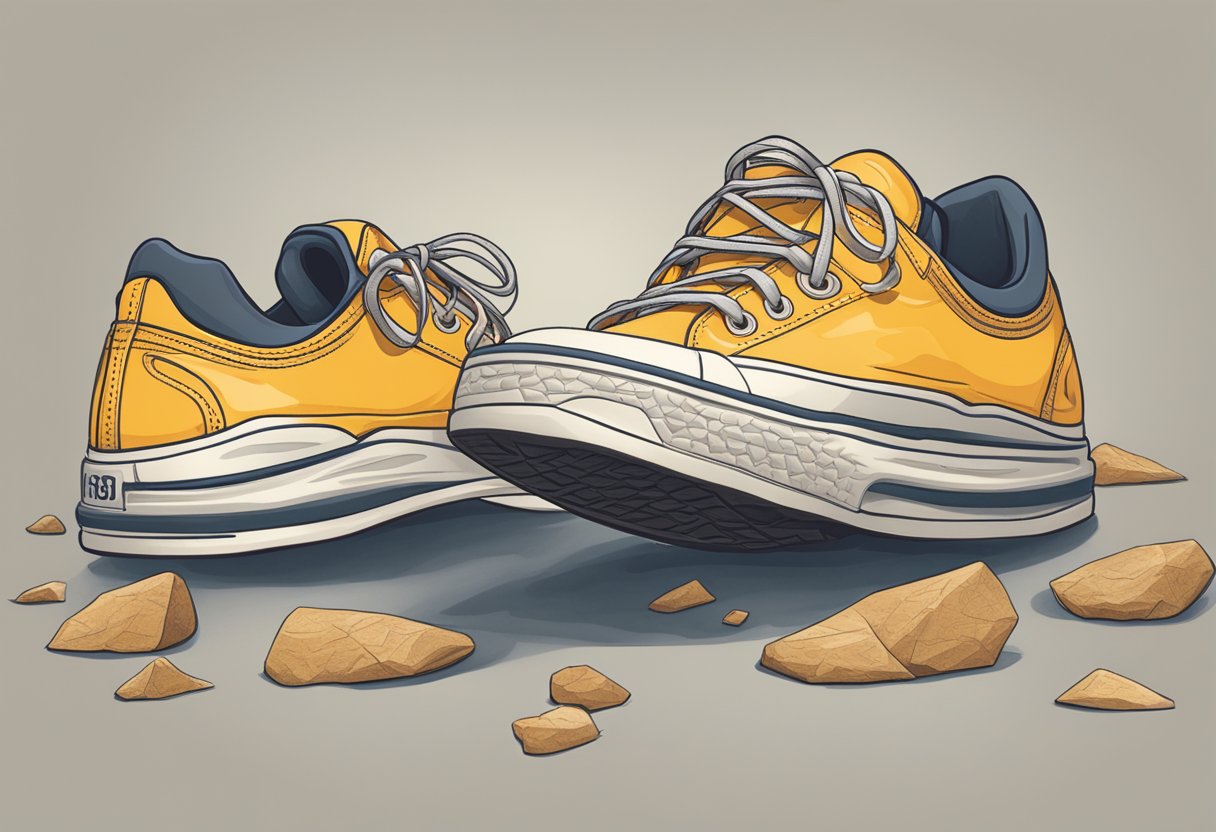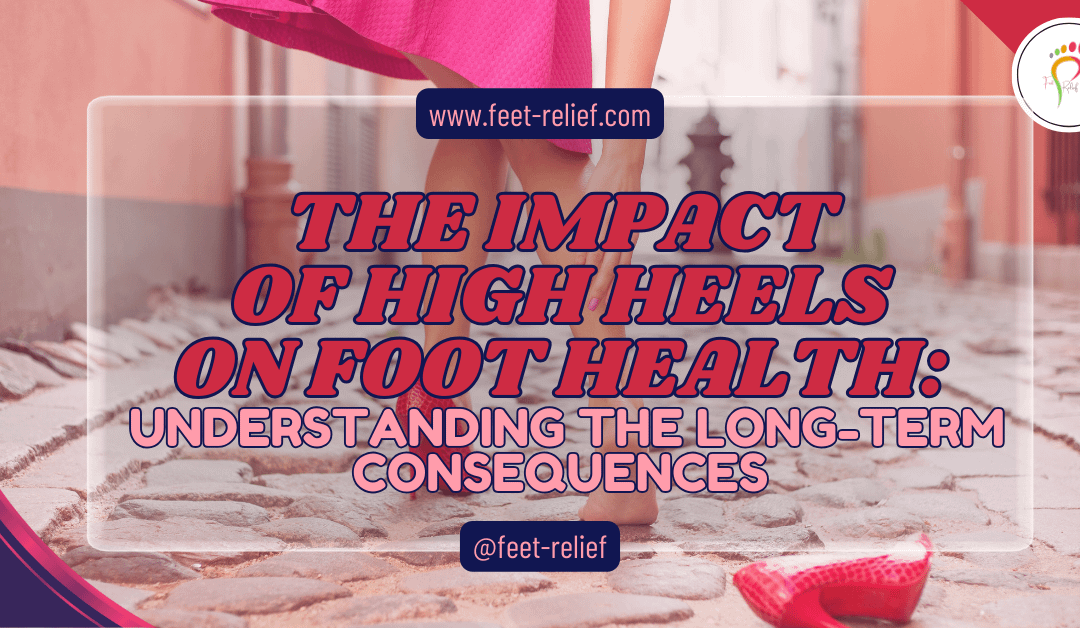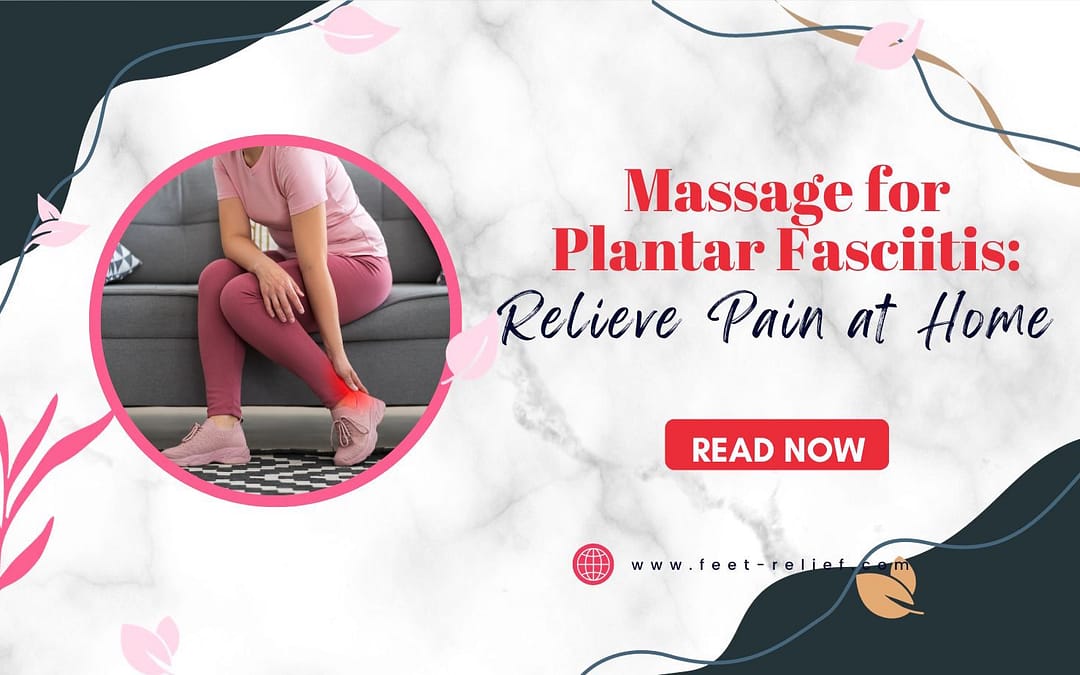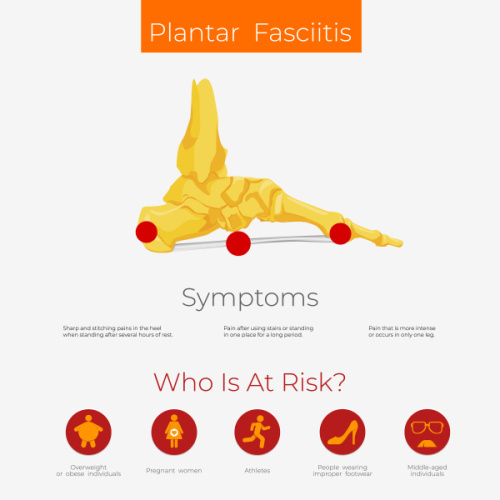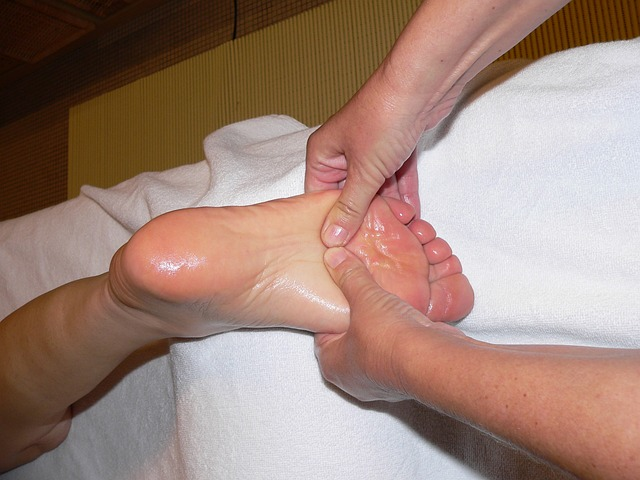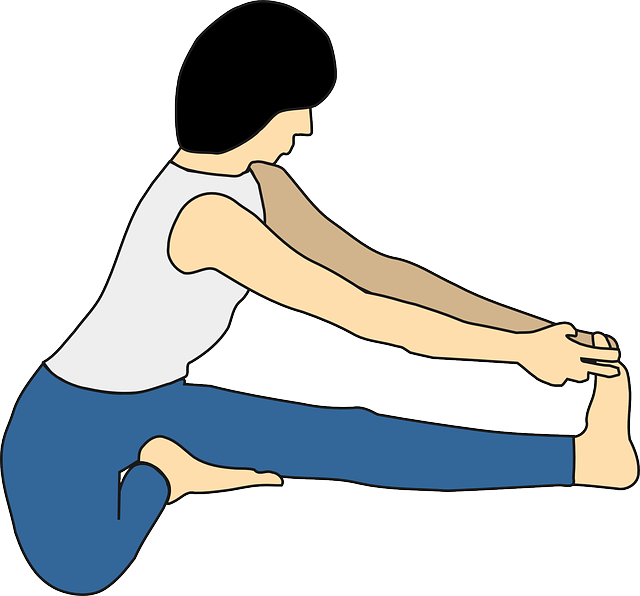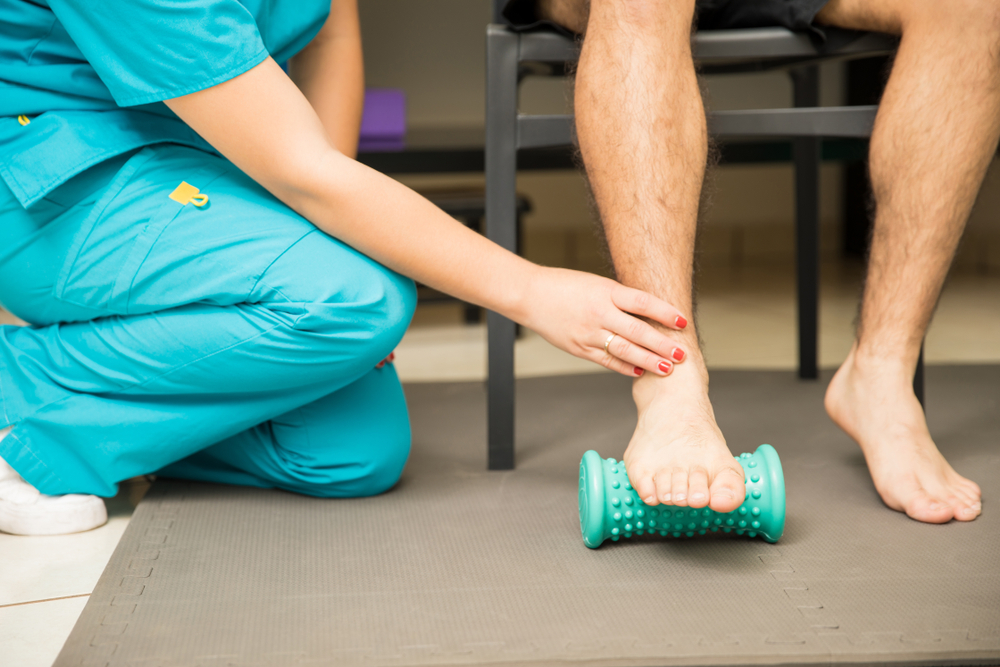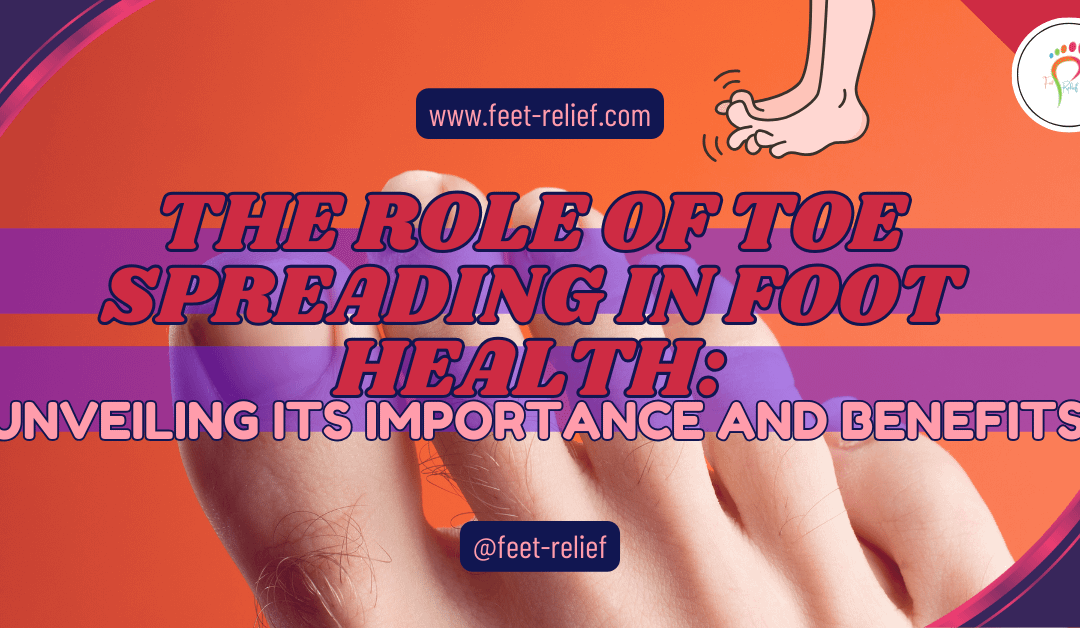
The Role of Toe Spreading in Foot Health: Unveiling Its Importance and Benefits
Toe spreading in foot health might seem like a niche topic, but it’s actually a cornerstone of overall well-being. Our feet, the foundation that carries us throughout our lives, deserve just as much attention as the rest of our body. Yet, many of us neglect them until pain strikes. This article dives deep into the world of toe spreading, exploring its surprising benefits for balance, strength, and even preventing common foot ailments.
Toe Spreading in Foot Health: Enhancing Balance and Preventing Injury
Foot health is a critical aspect of your overall well-being, yet it is often overlooked in the context of daily exercise and health routines. Among the many factors contributing to healthy feet, toe spreading plays a pivotal role. The act of spreading your toes can enhance your balance, contribute to stronger foot muscles, and promote a more natural foot alignment. Toes that are not confined have the freedom to align naturally, which can help distribute your body weight more evenly and reduce strain on certain areas of the foot.
The anatomy of the foot is complex, composed of bones, ligaments, and muscles that work in concert to support movement. When your toes have the space to spread out, they activate and strengthen the muscles in your feet, potentially preventing issues such as hammertoes and bunions. Moreover, giving your toes room to move can be particularly important if you regularly engage in activities that stress your feet. This is because proper toe alignment can affect your gait and your body’s overall biomechanics, leading to better movement patterns and reducing the risk of injury.
Key Takeaways
- Spreading your toes benefits balance and muscle strength in your feet.
- Proper toe alignment influences your gait and overall biomechanics.
- Allowing room for toe movement can help prevent common foot issues.

Anatomy Of The Foot
Understanding the structure of your foot is crucial for grasping how toe spreading impacts foot health. Each component, from bones to nerves, plays a vital role in foot function and overall well-being.
Bones and Joints
Your foot is a complex structure consisting of 26 bones, which fall into three main groups: the hindfoot, midfoot, and forefoot. The hindfoot includes the talus and calcaneus, which form the ankle. The midfoot contains bones that create the foot’s arch, and the forefoot is made up of the metatarsals and phalanges—the bones in your toes central to toe spreading for stability. These bones are interconnected through joints that allow flexibility and movement.
- Hindfoot: Talus, Calcaneus
- Midfoot: Navicular, Cuboid, Cuneiform bones
- Forefoot: Metatarsals, Proximal, Intermediate and Distal Phalanges
Muscles of the Foot
Muscular strength in the foot is essential for toe spreading. The intrinsic muscles, located on the sole, contribute to the foot’s arch support and include four layers. These muscles work to grip, which helps in stabilizing and balancing your body.
- First Layer: Abductor Hallucis, Flexor Digitorum Brevis, Abductor Digiti Minimi
- Second Layer: Quadratus Plantae, Lumbricals
- Third Layer: Flexor Hallucis Brevis, Adductor Hallucis, Flexor Digiti Minimi Brevis
- Fourth Layer: Plantar Interossei, Dorsal Interossei
Neural and Vascular Structures
The foot has a network of nerves and blood vessels. The main nerve of the foot, the tibial nerve, branches out to supply the muscles and skin. Adequate blood flow through arteries like the posterior tibial artery is vital for nourishing the feet and maintaining health. Your toes’ nerves and blood vessels play a critical role in sensation and movement, which underline the importance of toe mobility and spreading.
- Main Nerve: Tibial Nerve
- Key Artery: Posterior Tibial Artery
Importance Of Toe Spreading
Toe spreading is essential for maintaining foot health as it influences how you stand, walk, and balance. Properly aligned and separated toes contribute to a stable foundation for your body.
Balance and Stability
When your toes are spread, they provide a broader base of support, enhancing your balance and stability. Activities such as using toe spreaders can lead to improved proprioception—your body’s ability to sense its position in space.
Gait and Posture
A natural toe spread can positively affect your walking pattern, or gait, by allowing for adequate toe-off during each step. Aligning your toes with tools and exercises can lead to better foot mechanics and a healthier posture.
Consequences Of Restricted Toes
When your toes are consistently confined in tight footwear, the repercussions can be detrimental to your foot health, leading to common ailments and impacting your natural gait.


Common Foot Ailments
Persistently squeezing your toes into narrow shoes can lead to Hallux Valgus, commonly known as a bunion, where your big toe angles inwards towards the other toes. Additionally, you might experience Hammertoe, a deformity where the toe bends downward at the middle joint. Overlapped or crowding toes can also result from restricted footwear, further compounding discomfort and paving the way for issues like corns and calluses.
Impact on Walking and Running
Tight shoes can alter the way you walk and run by restricting the natural spreading of your toes during movement. This can lead to an uneven distribution of weight, contributing to overpronation or supination. Such imbalances increase your risk of injury by changing your biomechanics and potentially leading to a reduced efficiency in your stride, thereby affecting your overall foot health and athletic performance.
Toe Spreading In Various Populations
Toe spreading is not just a practice for athletes; it’s beneficial across various age groups and for individuals with different foot conditions. Here’s a closer look at its significance within specific populations.

Athletes
For athletes, maintaining foot health is crucial for optimal performance and injury prevention. Research indicates that toe spreading can improve the stability of the foot and enhance balance during dynamic movements.
Elderly
In the elderly population, foot health becomes imperative for maintaining mobility and reducing fall risk. Regular toe spreading exercises may contribute to better balance and strengthen foot muscles, providing a firmer footing.
Individuals with Foot Deformities
People with foot deformities may find that toe spreading helps alleviate their discomfort. It can aid in foot alignment and reduce the strain caused by conditions like bunions or hammertoes, as discussed in health resources. By working on toe flexibility and spacing, you can assist in improving foot posture over time.
Shoes and Toe Movement
The health of your feet hinges significantly on the freedom of movement your toes have within your shoes. Adequate toe space affects balance and stability, while restricted movement can lead to numerous foot ailments.
Effect of Footwear on Toes
Ill-fitting footwear can severely restrict toe movement, leading to a cascade of problems. Narrow toe boxes and non-ergonomic designs often cause the toes to compress, undermining their natural alignment and function. This restriction can impede your balance, as toes that lack the room to spread appropriately cannot contribute effectively to your body’s stability. For in-depth insights, examine the benefits outlined by foot experts on Bustle.
Choosing the Right Shoes
Selecting footwear that provides sufficient toe space is critical for maintaining foot health. Here are specific features to look for in a shoe:
- Toe Box Depth: Ensure there’s enough room vertically for your toes to move.
- Toe Box Width: A wide toe box allows for natural toe spread.
- As highlighted by Awesome Shoes, shoes should allow for a stable lever action of the foot without compressing the toes, as this impacts overall foot functionality.
When purchasing shoes, it’s essential to prioritize fit and function alongside style to promote optimal foot health and performance.
Toe Spreading Exercises
Incorporating toe spreading exercises into your routine can improve foot strength and flexibility. These exercises mitigate the risk of foot-related issues and enhance overall stability.
Stretching Techniques
Toe Splay: To perform the toe splay, sit comfortably with your feet flat on the floor. Spread your toes apart as wide as possible without straining. Hold this position for a few seconds before releasing. Repeat this exercise multiple times to help increase toe flexibility. For more on stretching benefits, MantraCare has insights on how toe stretches can support your entire body.
Strengthening Exercises
Toe Curls: Begin by placing small objects on the floor. Using only your toes, attempt to pick them up and hold for a few seconds. Place them back down and repeat. This action helps in strengthening the muscles around your toes and feet. Practitioners can find direct correlations between foot muscle exercises and bunion pain reduction through strengthening routines.
Marble Pickup: Another strengthening exercise involves picking up marbles with your toes. This can be quite challenging and works to strengthen the muscles beneath your feet. The marble pickup is considered one of the best foot strengthening exercises.
Implement these exercises regularly for best results in improving your foot health and toe strength.
Innovations In Toe Spreading
Innovative products have emerged to promote proper toe alignment and enhance foot health. These products aim to improve balance, foot strength, and flexibility.
Toe Separators
Toe separators are designed to realign your toes to their natural position. Traditionally crafted from silicone or similar materials, they gently push your toes apart to counteract the effects of tight footwear. An example of this innovation is highlighted by foot experts who advocate for their use to increase stability and proprioception, the awareness of your body’s position in space. For more details on these benefits, visit The Benefits Of Toe Spreaders, According To Foot Experts – Bustle.
- Materials: Silicone, Gel, Foam
- Usage: Daily wear, yoga, while resting
- Benefits:
- Improved balance
- Increased foot stability
Toe Spacing Products
Aside from separators, there are toe spacing products that take toe spreading a step further with exercises and active wearables. These products facilitate active toe spreading, which can improve toe strength and flexibility. Websites like Gait Happens provide exercises and guides on how to get the most out of these toe spacers. By implementing such exercises, you can increase mobility and alleviate tension in forefoot.
- Examples:
- Toe Spacing Socks
- Exercise Tools
- Exercise Benefits:
- Better toe muscle engagement
- Enhanced foot mobility
Clinical Perspectives
The clinical implications of toe spreading are grounded in two major perspectives: orthopedic and podiatry/physical therapy. Each offers unique insights into the functional role of toes in foot health.
Orthopedic Viewpoint
From the orthopedic standpoint, toe spreading is not simply a matter of physical appearance or discomfort. It’s integral to weight distribution and the structural integrity of your foot. When toes spread properly, they provide a larger base of support. This, in turn, affects your posture and overall biomechanics. Numerous studies, like the one titled “The sensory role of the sole of the foot,” highlight the importance of toe mobility in balance and stability, suggesting that interventions focusing on the toes could be valuable for certain patient groups.
Podiatry and Physical Therapy
In the realm of podiatry and physical therapy, toe spreading is key for preventing and managing conditions such as bunions, hammertoes, and plantar fasciitis. Therapeutic exercises that encourage toe spreading can improve tactile feedback and muscle strength in the foot. Practices that stimulate the foot sole, as discussed in the research on “The sensory role of the sole of the foot,” can lead to better balance, particularly in populations at risk of falls or suffering from chronic pain syndromes. Simple strategies such as toe spreaders or targeted physical therapy exercises often form part of the treatment regimens aimed at optimizing foot function and health.
Preventive Measures
Taking proactive actions can enhance your foot health by focusing on the role of toe spreading. Here are key strategies:
- Toe Stretches: Regularly stretch your toes to maintain flexibility. Toe stretching exercises can help realign toe joints and reduce the risk of problems like hammertoes.Example:
- Extend and spread your toes wide, hold for a few seconds, and relax.
- Repeat multiple times a day for optimal results.
- Proper Footwear: Wear shoes that provide enough room for your toes to move. Tight shoes can compress your toes and lead to musculoskeletal issues.Checklist for selecting footwear:
- Spacious toe box
- Supportive arch
- Firm heel counter
- Toe Separators: These silicone devices fit between your toes, helping them to stay in their natural position. This can be especially beneficial for those who frequently wear tight footwear.
- Mindful Walking: Pay attention to your walking habits. Aim to distribute your weight evenly across your feet and avoid excessive rolling inwards or outwards.
- Foot Hygiene: Keep your feet clean and dry to prevent fungal infections, which can affect toe spacing and foot structure.
- Avoid High Heels: High heels can alter the natural position of your toes. Choose footwear with a lower heel for daily use to support overall foot health.
By regularly incorporating these practices into your routine, you can contribute significantly to the long-term well-being of your feet.
Advancements In Foot Health Research
Recent strides in foot health research have emphasized the significance of toe spreading and its contribution to overall foot mechanics. Studies into foot pain and its relationship with footwear recognize that frequently worn improper shoes may lead to issues like plantar fasciitis, highlighting the importance of supportive and well-fitting shoes, including those with adequate room for toe spread.
Toe Spacing Devices: Devices designed to promote proper toe alignment can help in mitigating conditions that arise due to years of restrictive footwear. Such devices encourage natural toe spread, which can enhance foot stability and mobility.
Footwear Design Improvements: Innovative shoe designs have been developed to accommodate a more natural foot shape and toe splay. This shoe technology can reduce the risk of diabetic foot ulcers by creating space for toes to spread, thus distributing weight more evenly and reducing pressure points.
Educational Initiatives: Awareness programs educate on the correlations between foot health and proper toe alignment. Foot screenings and guidelines now often include assessments of toe spacing to prevent and manage foot-related disorders.
| Key Focus Area | Description |
|---|---|
| Toe Spread | Greater understanding of its impact on foot dynamics and health. |
| Footwear Design | Advances in accommodating natural foot positioning. |
| Public Education | Increased knowledge and awareness of the importance of toe spacing. |
Through these advancements, your overall foot health can see significant improvements. By valuing toe spreading in both research and practical applications, future foot conditions may be better managed or altogether prevented.
Toe Spreading in Foot Health: A Foundation for a Healthier You
Throughout this article, we’ve explored the fascinating world of toe spreading and its impact on foot health. We’ve seen how this simple act can improve balance, strengthen foot muscles, and even prevent common foot problems. But toe spreading is just one piece of the puzzle.
For optimal foot health, consider incorporating a holistic approach. Pair toe stretches and exercises with well-fitting shoes that allow your toes to splay naturally. Maintain good foot hygiene to prevent fungal infections and prioritize a healthy lifestyle that includes a balanced diet and weight management – both of which can put extra stress on your feet.
Remember, your feet are the foundation that supports you throughout your life’s journey. By taking care of them with practices like toe spreading, you’re investing in a healthier and more mobile future. Ready to take the first step? Try incorporating some of the toe stretches or exercises mentioned in this article into your daily routine. You might be surprised at the difference it makes!
Frequently Asked Questions
Toe separators can be a valuable tool for maintaining and improving foot health. The following common questions address their use and benefits.
What are the benefits of using toe separators for foot health?
Toe separators can help improve blood flow to your feet, reduce inflammation, enhance muscle stretching, and strengthen foot muscles, which is especially beneficial if you’re an athlete dealing with foot fatigue or injuries. They are known to promote strength and flexibility in the feet.
How long should you wear toe separators daily for optimal results?
The duration of wearing toe separators can vary, but it’s typically recommended to start with short intervals of 10-15 minutes and gradually increase to an hour or longer as your feet adapt. Consistency and comfort are key when determining the optimal duration for individual needs.
Can regularly spreading your toes improve overall foot function?
Yes, spreading your toes regularly can improve your foot function by encouraging the proper alignment of your toes and feet. This aids in distributing your weight evenly across your feet, which can enhance balance and stability during movement.
Are there any long-term health benefits associated with toe spreading exercises?
Engaging in toe spreading exercises over the long term can potentially lead to better posture, reduced risk of toe deformities, and improved circulation. It may also decrease the likelihood of developing common foot-related issues.
What changes can one expect from consistent use of toe separators?
With consistent use of toe separators, you may notice a reduction in foot pain, improved toe alignment, and a decrease in issues caused by tight footwear, such as bunions. This can lead to greater comfort and mobility in daily activities.
How common is the ability to naturally spread one's toes, and does it impact foot health?
The ability to naturally spread one’s toes varies among individuals. However, it impacts foot health as spreading your toes can help maintain proper foot mechanics. For those who may not have this ability naturally, toe separators can be a helpful tool to achieve similar benefits.
Foot Fanatics Unite!
Dive deeper into foot care at feet-relief.com and join our passionate community on Facebook. Discover engaging content, insightful product reviews, and expert tips to keep your feet happy and healthy!



